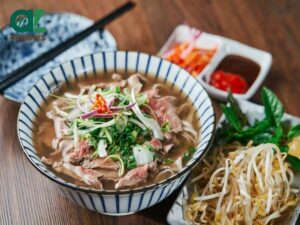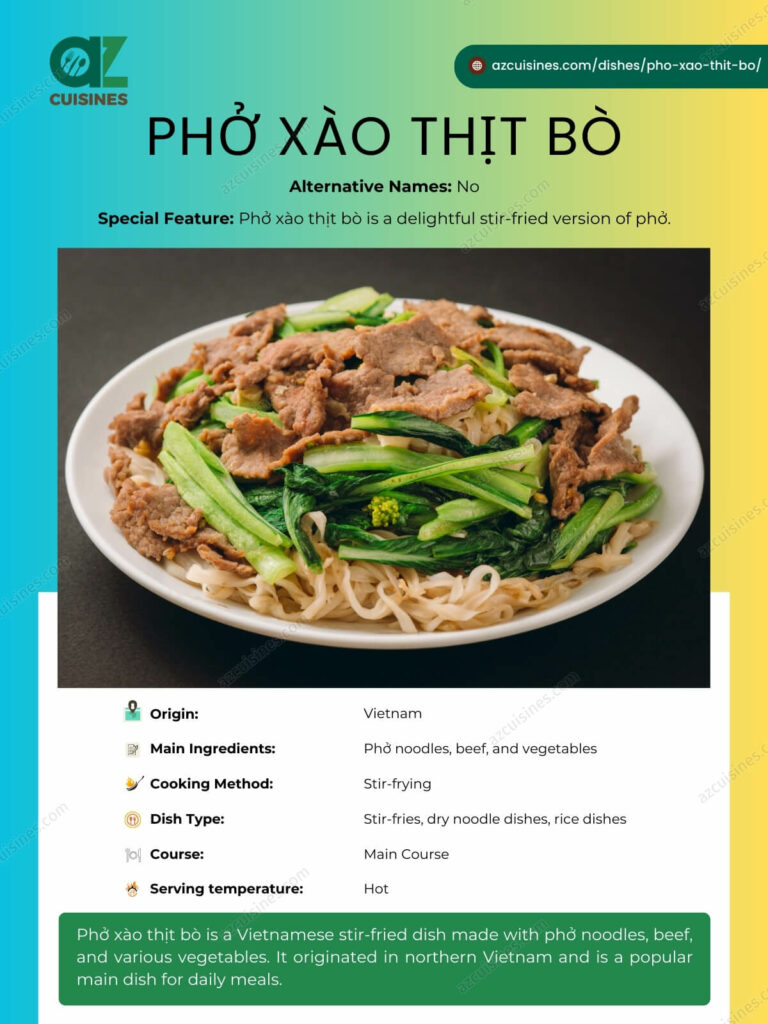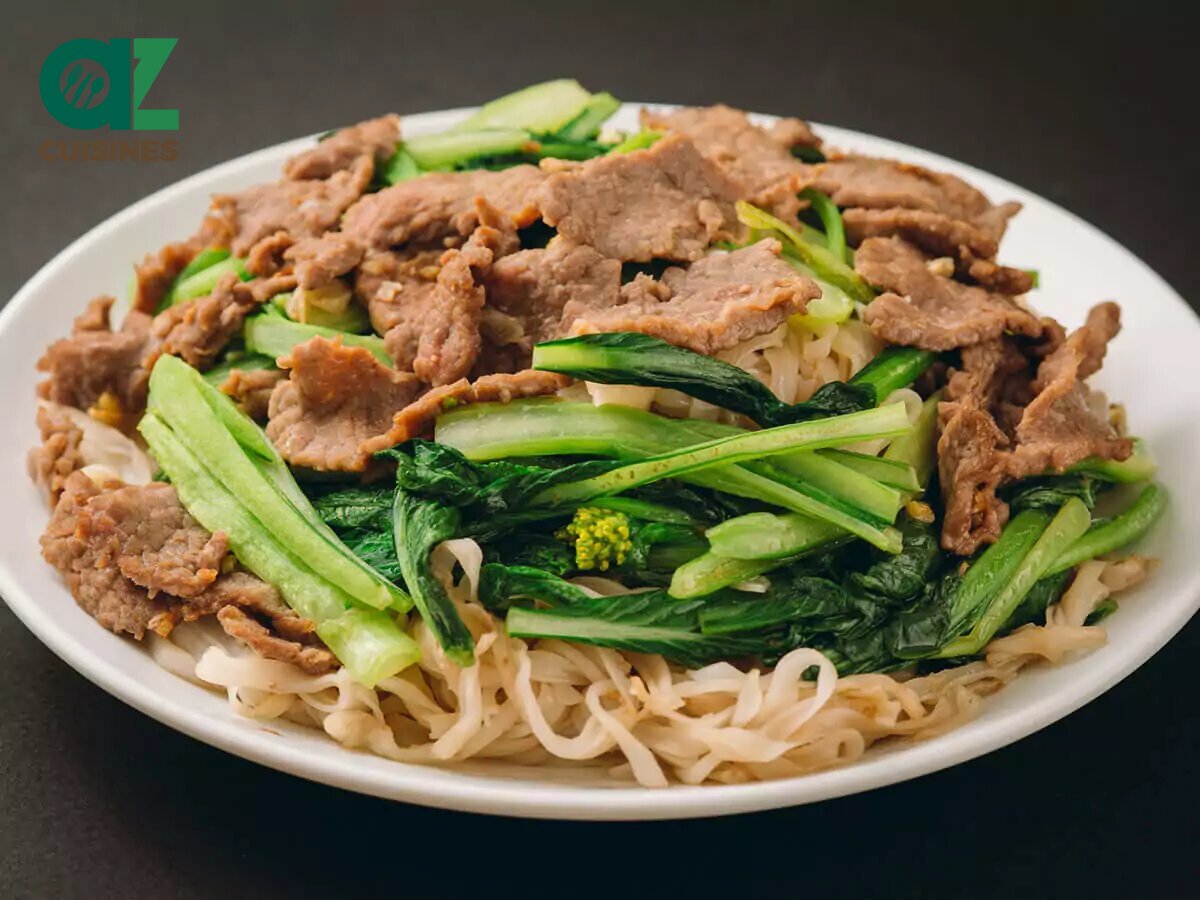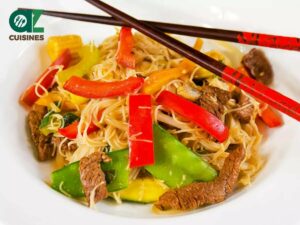Phở Xào Thịt Bò: Basic Information
Pronunciation
Alternative Name(s)
Dish Type
Course
Mealtime
Popular Phở Xào Thịt Bò Variations

Phở Bò (Beef Pho)
Phở Xào Thịt Bò: Ingredients and Preparation
Main Ingredients
Main Cooking Method
Preparation Process
Phở Xào Thịt Bò: A Deep Dive
Cultural Significance
Taste
Texture
Aroma
Color
Serving Style
Serving Temperature
Accompaniment
Occasions
Seasons
Special Diets
Calories
Popularity
Popular Similar Dishes
- Mì Xào Bò
- Bún Xào Thịt
- Beef Chow Fun
Popular Dining Area
Phở xào thịt bò, literally “stir-fried phở noodles with beef,” is a traditional Vietnamese dish made with sheets of phở noodles (thin, flat rice noodles), thinly sliced beef, and vegetables.
Onions and tomatoes are the most popular choices for this stir-fried dish, though carrots, bok choy, celery, and bean sprouts can also be added.
Phở xào thịt bò became popular among households in Northern Vietnam in the 1970s. Continue reading, and you will discover the advantages, disadvantages, and popularly asked questions about this beef stir-fry. Lastly, you will know about a few dishes comparable to phở xào thịt bò.
Key Points
Phở Xào Thịt Bò Images
Pros and Cons of Eating Phở Xào Thịt Bò
Phở xào thịt bò has the following advantages and disadvantages:
Pros
Cons
With these pros and cons in mind, it’s time to check out the FAQs section for more helpful facts about phở xào thịt bò.









Truc Tran (Kris)
Senior Food Editor
Expertise
Home Cooking, Meal Planning, Recipe Development, Baking and Pastry, Food Editor, Cooking-video Maker, Vietnamese Food Evaluation Expert
Education
Truc Tran (Kris), an experienced food writer and editor, is great at exploring and describing global cuisines, from simple street food to fancy dining. In her writing, she skillfully mixes different flavors, cooking methods, and culinary traditions, showing the unique character of various cultures through their food and drinks. On azcuisines.com, Kris highlights her knowledge, especially in Asian cuisine and worldwide traditional dishes.